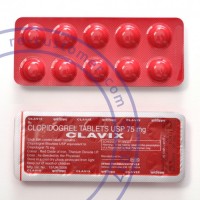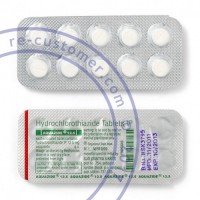How Do Doctors Know if Your Heart Has Had Damage from a Heart Attack?
- 03 April 2023 14:48:43
- Views: 1125
A heart attack, or myocardial infarction, occurs when the blood flow to a part of the heart is blocked, causing damage to the heart muscle. Prompt medical attention is crucial in order to minimize the damage and prevent further complications. But how do doctors know if your heart has had damage from a heart attack? In this article, we'll discuss the various tests and procedures that doctors use to diagnose heart damage after a heart attack.
Microzide (Hydrochlorothiazide) online, Coumadin Warfarin where to buy, Perindopril Aceon side effects
Electrocardiogram (ECG or EKG)
An electrocardiogram is a non-invasive test that records the electrical activity of the heart. It is often the first test done when a patient presents with symptoms of a heart attack. An ECG can show changes in the heart's rhythm and electrical activity that may suggest damage to the heart muscle. However, it may not always be able to detect all types of heart damage.
Blood Tests
When a heart attack occurs, the heart muscle cells begin to die and release enzymes into the bloodstream. Blood tests can detect these enzymes, such as troponin and creatine kinase, which are markers of heart damage. The levels of these enzymes in the blood can provide information about the severity of the heart attack and the extent of the damage.
Echocardiogram
An echocardiogram is a non-invasive test that uses sound waves to create images of the heart. It can show the size and shape of the heart, as well as the movement of the heart's valves and walls. An echocardiogram can also reveal areas of the heart that are not contracting properly, which may indicate heart damage.
Cardiac Catheterization
A cardiac catheterization is an invasive test that involves inserting a thin tube (catheter) into a blood vessel in the groin or arm and guiding it to the heart. This procedure allows doctors to directly visualize the heart's blood vessels and check for blockages or other abnormalities. During the procedure, the doctor may also inject dye into the blood vessels to create detailed images of the heart's chambers and blood flow.
Magnetic Resonance Imaging (MRI)
An MRI uses a powerful magnet and radio waves to create detailed images of the heart. It can provide information about the size, shape, and function of the heart, as well as the extent of heart damage. MRI is often used when other tests, such as an echocardiogram, do not provide enough information.
Conclusion
When a heart attack occurs, it is crucial to seek medical attention promptly. Various tests and procedures can be used to diagnose heart damage and determine the extent of the damage. An electrocardiogram, blood tests, echocardiogram, cardiac catheterization, and MRI are some of the tests that doctors may use to diagnose heart damage. Treatment options will depend on the severity of the damage and may include medication, lifestyle changes, or surgery. It's important to work closely with your healthcare provider to manage any heart-related issues and prevent future complications.





